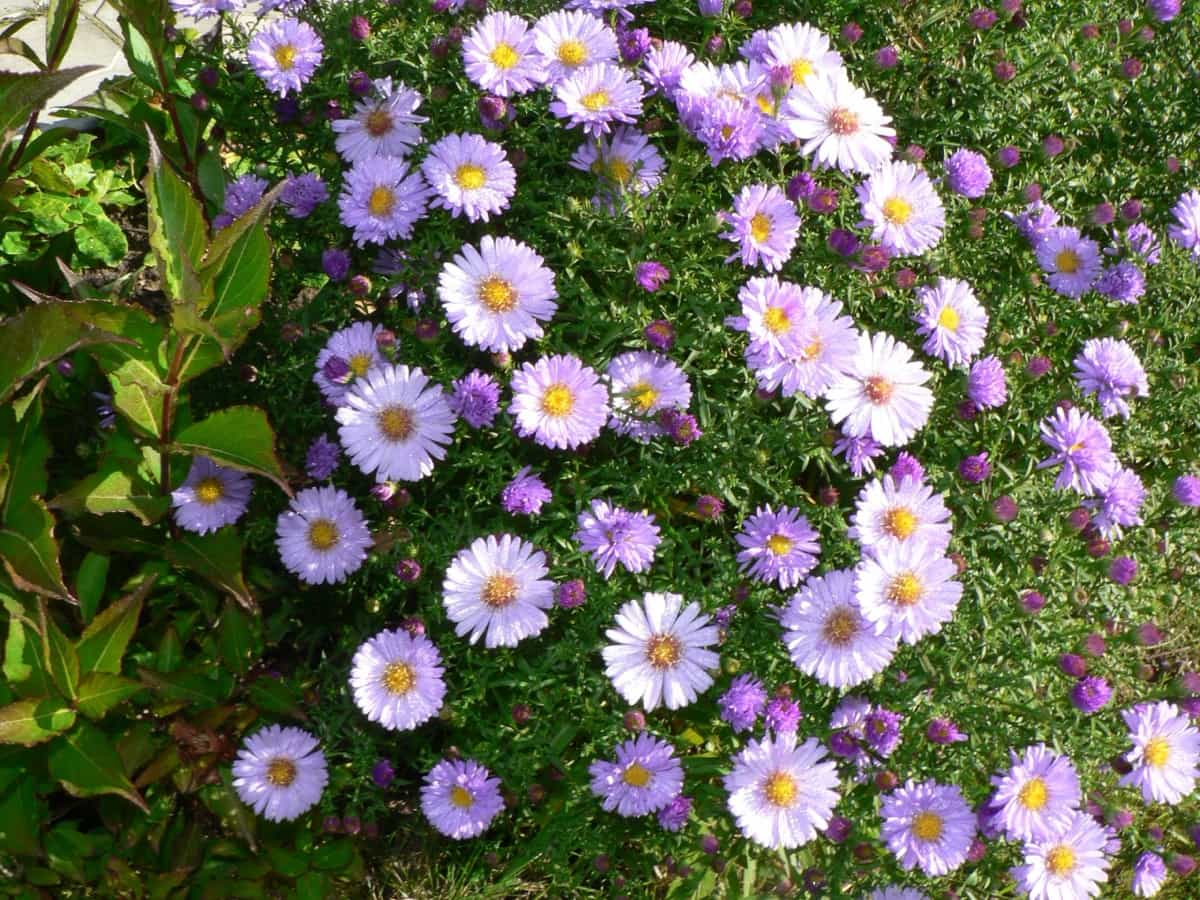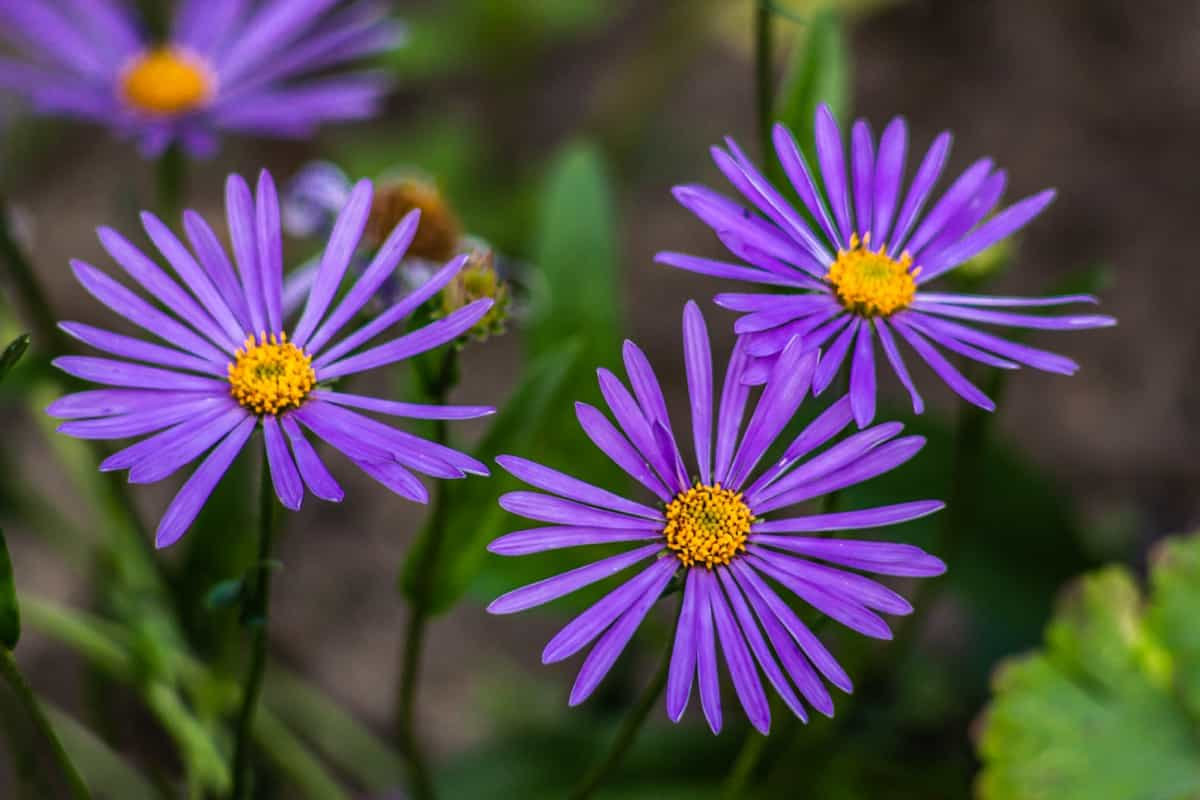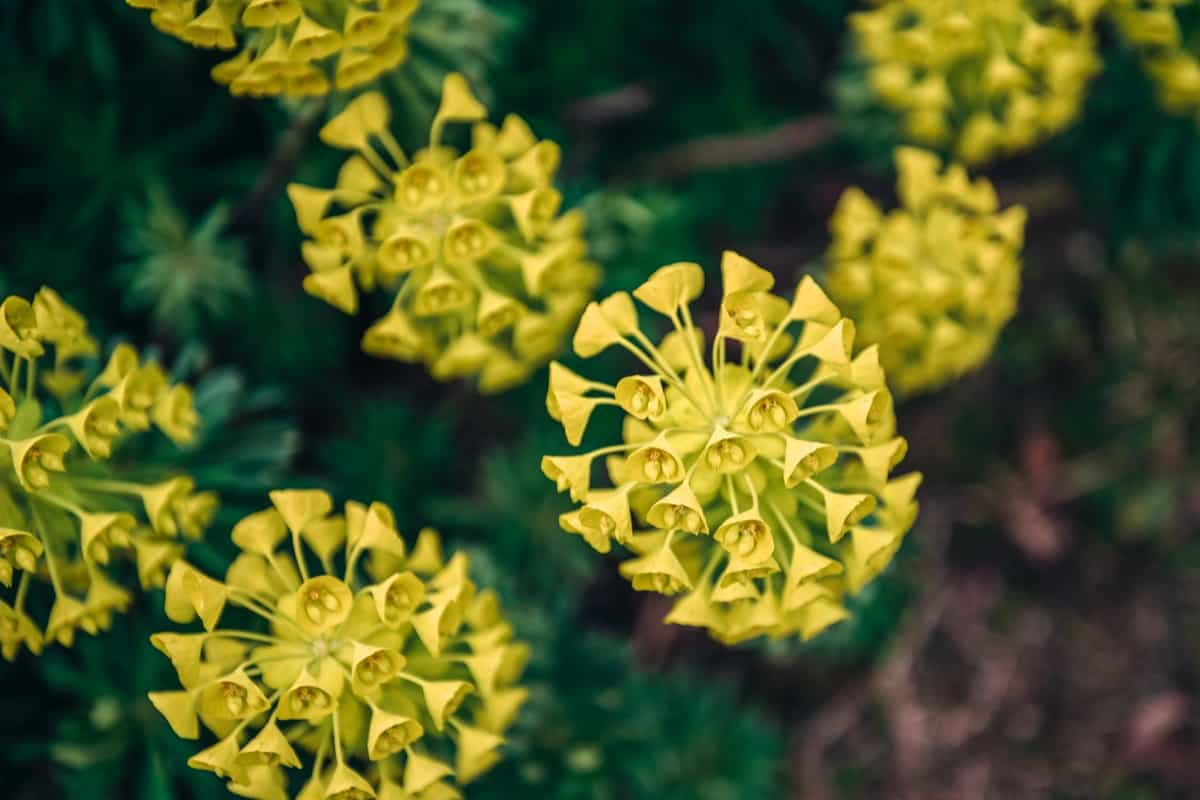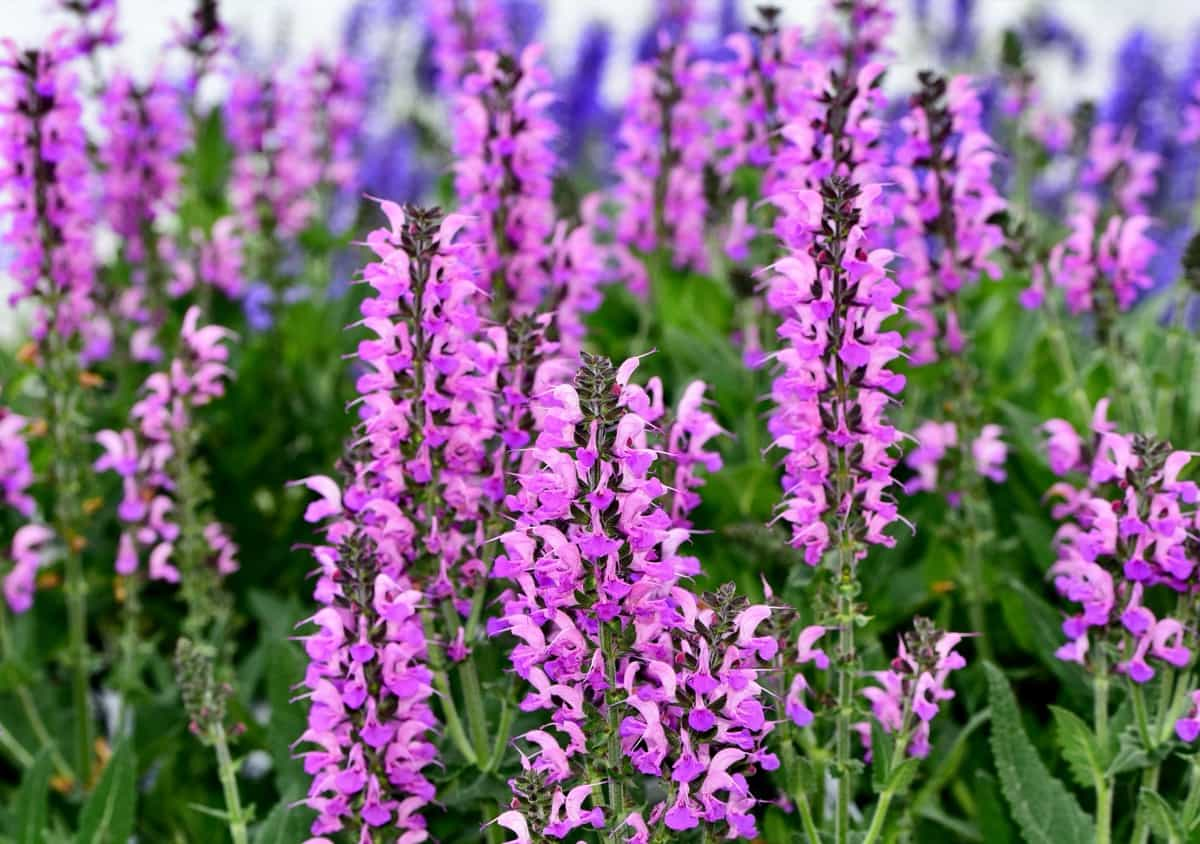Perennial flowers add beauty and vibrancy to gardens but are susceptible to various fungal diseases that can compromise their health and aesthetics. Managing these diseases requires a holistic approach that combines preventive measures, early detection, and effective treatments. This guide will explore the principles of managing fungal diseases in perennial flowers, emphasizing natural and organic methods for control and prevention.

Management of Fungal Diseases in Perennial Flowers
Understanding Fungal Diseases in Perennial Flowers
Perennial flowers are susceptible to various fungal diseases, including rusts, blights, powdery mildews, and downy mildews. Rusts manifest as reddish-brown lesions, blights cause wilting and browning of foliage, powdery mildews result in a powdery white substance on leaves, and downy mildews cause yellowing and fuzzy growth.
These diseases thrive in damp conditions, spreading through spores. Prevention involves proper plant spacing, adequate ventilation, and soil drainage. Organic treatments like neem oil and compost teas can help manage these issues naturally, maintaining a healthy perennial garden.
Identifying Fungal Infections in Perennial Flowers
Detecting fungal infections in perennial flowers is crucial for effective management. Rusts, characterized by reddish-brown pustules on leaves, stems, or flowers, often lead to premature leaf drop. Blights, starting at the tips, induce wilting, browning, and plant tissue necrosis. Powdery mildew manifests as a powdery white substance on leaves, hindering photosynthesis. Downy mildews cause yellowing, accompanied by a fuzzy growth on the undersides of leaves.
Identification involves regular plant inspection, paying attention to color, texture, and overall plant health changes. Examine both sides of leaves for characteristic symptoms and consider environmental factors like humidity and air circulation. Early detection is key; affected plant parts should be removed promptly to prevent further spread. Organic treatments, including neem oil, copper-based fungicides, and compost teas, provide effective and eco-friendly solutions.
Cultural Practices for Preventing Fungal Diseases in Perennial Flowers
Implementing cultural practices is paramount for preventing fungal diseases in perennial flowers. Start by providing adequate spacing between plants to enhance air circulation, reducing humidity levels that favor fungal growth. Regularly clean garden debris and prune infected plant parts to curb disease spread. Rotate crops yearly to discourage pathogens from establishing long-term residence. Choosing disease-resistant perennial varieties further fortifies the garden’s defenses, promoting a resilient and healthy floral environment.
In case you missed it: Rose Flower Chaffer Beetle Pest Management: Symptoms, Treatment, Chemical, Biological, and Organic Control

Proper Watering Techniques to Prevent Fungal Infections in Perennial Flowers
Water at the base of plants in the morning, allowing excess moisture to evaporate during the day and minimizing the duration of leaf wetness. Avoid overhead irrigation to prevent water from settling on foliage, creating an environment conducive to fungal development. Utilize soaker hoses or drip irrigation for targeted root hydration. Additionally, employ mulch to regulate soil moisture and temperature. Adopting these watering practices establishes a proactive defense against fungal diseases, fostering optimal conditions for perennial flower health.
Soil Management Strategies for Controlling Fungal Diseases in Perennial Flowers
Effective soil management is pivotal in controlling fungal diseases in perennial flowers. Opt for well-draining soil to prevent waterlogged conditions that promote fungal growth. Regularly amend soil with organic matter like compost to enhance microbial activity, creating an environment antagonistic to pathogens. Practice crop rotation to disrupt the life cycles of soilborne fungi. These soil management strategies establish a foundation for robust perennial flower growth while minimizing the risk of fungal infections.
Selecting Resistant Varieties for Natural Resistance to Fungal Pathogens
Choosing resistant perennial varieties is a proactive approach to combat fungal pathogens. Opt for plants bred with natural resistance to prevalent fungal diseases. Resistant varieties possess genetic traits that impede the development and spread of pathogens, reducing the need for chemical interventions.
Prioritize well-adapted, disease-resistant cultivars suited to your region’s climate and environmental conditions. This thoughtful selection bolsters the garden’s defenses and promotes a sustainable and eco-friendly gardening approach, fostering resilient perennial flowers with innate abilities to resist fungal infections.
Integrated Pest Management for Fungal Diseases in Perennial Flowers
Embracing integrated pest management (IPM) is a holistic approach to combat fungal diseases in perennial flowers. Incorporate biological controls such as predatory insects to manage pest populations contributing to fungal spread. Implement cultural practices like proper sanitation, crop rotation, and selecting disease-resistant varieties. Monitoring and early intervention are crucial; deploy natural enemies of pests. By integrating various strategies, IPM minimizes reliance on synthetic chemicals, creating a balanced ecosystem that enhances the resilience of perennial flowers against fungal diseases.
Organic Fungicides for Managing Fungal Infections in Perennial Flowers
Organic fungicides offer effective and eco-friendly solutions for managing fungal infections in perennial flowers. Compounds like neem oil, copper-based sprays, and baking soda solutions act as natural antifungals, disrupting fungal growth without harming beneficial organisms. These organic alternatives provide a safe and sustainable way to control powdery mildew, rust, and other fungal diseases.
In case you missed it: Mango Flower Webber Pest Management: Symptoms, Treatment, Chemical, Biological, Natural, and Organic Control

Regular application, especially during susceptible growth stages, forms a protective barrier. Organic fungicides combat current infections and contribute to a healthier garden ecosystem, promoting biodiversity and minimizing environmental impact compared to traditional chemical treatments.
Pruning and Sanitation Practices to Control Fungal Diseases in Perennial Flowers
Strategic pruning and sanitation are key in controlling fungal diseases in perennial flowers. Remove infected plant parts promptly, especially during dormancy, to eliminate overwintering fungal spores. Dispose of debris away from the garden to prevent reinfection. Prune for proper air circulation, reducing humidity that fosters fungal growth.
Sterilize pruning tools between cuts to avoid spreading pathogens. These practices maintain a clean and well-ventilated environment, disrupting the fungal life cycle and curbing the potential for disease spread, ensuring healthier and more resilient perennial flowers.
Regular Inspections to Detect and Treat Early Fungal Infections in Perennial Flowers
Regularly scrutinize plants for signs of discoloration, lesions, or unusual growth. Promptly address any anomalies to prevent the spread of pathogens. Treat affected areas with organic fungicides or natural remedies like neem oil. Swift action during the initial stages curtails the impact of fungal diseases, preserving plant health and minimizing the need for aggressive interventions. By incorporating vigilant monitoring into your gardening routine, you establish a proactive defense against fungal infections, fostering thriving and disease-resistant perennial flowers.
In case you missed it: Rose Flower Chaffer Beetle Pest Management: Symptoms, Treatment, Chemical, Biological, and Organic Control

Conclusion
In conclusion, managing fungal diseases in perennial flowers requires a multifaceted approach. Embracing these natural and organic strategies safeguards perennial flowers and promotes a flourishing garden ecosystem, minimizing environmental impact.
- Deworming Schedule for Dogs/Puppies: A Beginners Guide
- How to Prevent and Control Parasites in Goats
- Beneficial Insects in Pest Management
- Natural Solutions for Pest Control in Flower Gardens
- Types of Fungicides Used in Agriculture
- Common Issues in the Fruit Development Stage of Pomegranate Farming
- Fruit Development Issues in Papaya: Easy Solutions and Treatment
- Soil-Borne Diseases and How to Protect Your Plants
- Practices to Prevent Disease Spread in the Garden